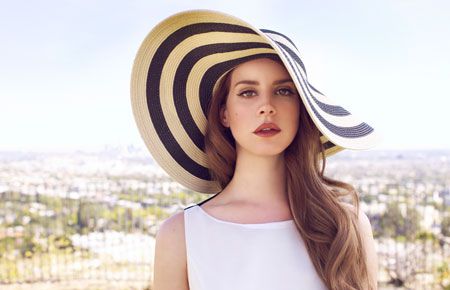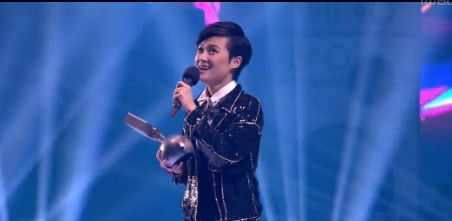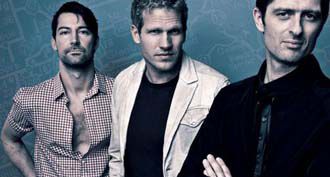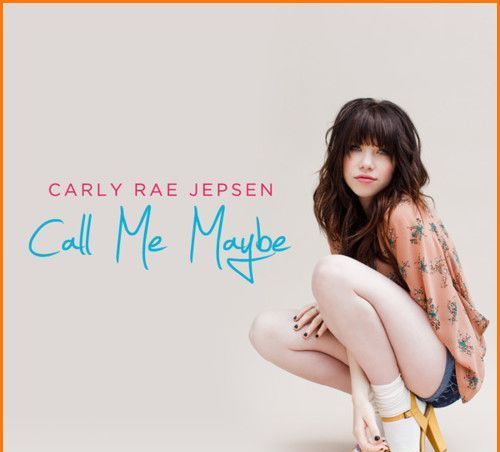美国文学简史完全笔记 Chapter 5
|
Chapter 5 The Modern Period Section 1 The 1920s I. Introduction The 1920s is a flowering period of American literature. It is considered ※the second renaissance§ of American literature. The nicknames for this period: (1)Roaring 20s 每 comfort (2)Dollar Decade 每 rich (3)Jazz Age 每 Jazz music II. Background 1.First World War 每 ※a war to end all wars§(1)Economically: became rich from WWI. Economic boom: new inventions. Highly-consuming society. (2)Spiritually: dislocation, fragmentation. 2.wide-spread contempt for law (looking down upon law) 3.Freud*s theory III. Features of the literature Writers: three groups(1)Participants (2)Expatriates (3)Bohemian (unconventional way of life) 每 on-lookers Two areas:(1)Failure of communication of Americans (2)Failure of the American society Imagism I. Background Imagism was influenced by French symbolism, ancient Chinese poetry and Japanese literature ※haiku§ II. Development: three stages 1.1908~1909: London, Hulme 2.1912~1914: England -> America, Pound 3.1914~1917: Amy Lowell III. What is an ※image§? An image is defined by Pound as that which presents an intellectual and emotional complex in an instant of time, ※a vortex or cluster of fused ideas§ ※endowed with energy§. The exact word must bring the effect of the object before the reader as it had presented itself to the poet*s mind at the time of writing. IV. Principles 1.Direct treatment of the ※thing§, whether subjective or objective; 2.To use absolutely no word that does not contribute to the presentation; 3.As regarding rhythm, to compose in the sequence of the musical phrase, not in the sequence of a metronome. V. Significance 1.It was a rebellion against the traditional poetics which failed to reflect the new life of the new century. 2.It offered a new way of writing which was valid not only for the Imagist poets but for modern poetry as a whole. 3.The movement was a training school in which many great poets learned their first lessons in the poetic art. 4.It is this movement that helped to open the first pages of modern English and American poetry. VI. Ezra Pound 1.life 2.literary career 3.works (1)Cathay (2)Cantos (3)Hugh Selwyn Mauberley 4.point of view (1)Confident in Pound*s belief that the artist was morally and culturally the arbiter and the ※saviour§ of the race, he took it upon himself to purify the arts and became the prime mover of a few experimental movements, the aim of which was to dump the old into the dustbin and bring forth something new. (2)To him life was sordid personal crushing oppression, and culture produced nothing but ※intangible bondage§. (3)Pound sees in Chinese history and the doctrine of Confucius a source of strength and wisdom with which to counterpoint Western gloom and confusion. (4)He saw a chaotic world that wanted setting to rights, and a humanity, suffering from spiritual death and cosmic injustice, that needed saving. He was for the most part of his life trying to offer Confucian philosophy as the one faith which could help to save the West. 5.style: very difficult to read Pound*s early poems are fresh and lyrical. The Cantos can be notoriously difficult in some sections, but delightfully beautiful in others. Few have made serious study of the long poem; fewer, if anyone at all, have had the courage to declare that they have conquered Pound; and many seem to agree that the Cantos is a monumental failure. 6.Contribution He has helped, through theory and practice, to chart out the course of modern poetry. 7.The Cantos 每 ※the intellectual diary since 1915§ Features: (1)Language: intricate and obscure (2)Theme: complex subject matters (3)Form: no fixed framework, no central theme, no attention to poetic rules VII.T. S. Eliot 1.life 2.works (1)poems l The Love Song of J. Alfred Prufrock l The Waste Land (epic) l Hollow Man l Ash Wednesday l Four Quarters (2)Plays l Murder in the Cathedral l Sweeney Agonistes l The Cocktail Party l The Confidential Clerk (3)Critical essays l The Sacred Wood l Essays on Style and Order l Elizabethan Essays l The Use of Poetry and The Use of Criticisms l After Strange Gods 3.point of view (1)The modern society is futile and chaotic. (2)Only poets can create some order out of chaos. (3)The method to use is to compare the past and the present. 4.Style (1)Fresh visual imagery, flexible tone and highly expressive rhythm (2)Difficult and disconnected images and symbols, quotations and allusions (3)Elliptical structures, strange juxtapositions, an absence of bridges 5.The Waste Land: five parts (1)The Burial of the Dead (2)A Game of Chess (3)The Fire Sermon (4)Death by Water (5)What the Thunder Said VIII. Robert Frost 1.life 2.point of view (1)All his life, Frost was concerned with constructions through poetry. ※a momentary stay against confusion§. (2)He understands the terror and tragedy in nature, but also its beauty. (3)Unlike the English romantic poets of 19th century, he didn*t believe that man could find harmony with nature. He believed that serenity came from working, usually amid natural forces, which couldn*t be understood. He regarded work as ※significant toil§. 3.works 每 poems the first: A Boy*s Will collections: North of Boston, Mountain Interval (mature), New Hampshire 4.style/features of his poems (1)Most of his poems took New England as setting, and the subjects were chosen from daily life of ordinary people, such as ※mending wall§, ※picking apples§. (2)He writes most often about landscape and people 每 the loneliness and poverty of isolated farmers, beauty, terror and tragedy in nature. He also describes some abnormal people, e.g. ※deceptively simple§, ※philosophical poet§. (3)Although he was popular during 1920s, he didn*t experiment like other modern poets. He used conventional forms, plain language, traditional metre, and wrote in a pastured tradition. IX. e. e. cummings ※a juggler with syntax, grammar and diction§ 每 individualism, ※painter poet§ Novels in the 1920s I. F. Scott Fitzgerald 1.life 每 participant in 1920s 2.works (1)This Side of Paradise (2)Flappers and Philosophers (3)The Beautiful and the Damned (4)The Great Gatsby (5)Tender is the Night (6)All the Sad Young Man (7)The Last Tycoon 3.point of view (1)He expressed what the young people believed in the 1920s, the so-called ※American Dream§ is false in nature. (2)He had always been critical of the rich and tried to show the integrating effects of money on the emotional make-up of his character. He found that wealth altered people*s characters, making them mean and distrusted. He thinks money brought only tragedy and remorse. (3)His novels follow a pattern: dream 每 lack of attraction 每 failure and despair. 4.His ideas of ※American Dream§ It is false to most young people. Only those who were dishonest could become rich. 5.Style Fitzgerald was one of the great stylists in American literature. His prose is smooth, sensitive, and completely original in its diction and metaphors. Its simplicity and gracefulness, its skill in manipulating the relation between the general and the specific reveal his consummate artistry. 6.The Great Gatsby Narrative point of view 每 Nick He is related to everyone in the novel and is calm and detected observer who is never quick to make judgements. Selected omniscient point of view II. Ernest Hemingway 1.life 2.point of view (influenced by experience in war) (1)He felt that WWI had broken America*s culture and traditions, and separated from its roots. He wrote about men and women who were isolated from tradition, frightened, sometimes ridiculous, trying to find their own way. (2)He condemned war as purposeless slaughter, but the attitude changed when he took part in Spanish Civil War when he found that fascism was a cause worth fighting for. (3)He wrote about courage and cowardice in battlefield. He defined courage as ※an instinctive movement towards or away from the centre of violence with self-preservation and self-respect, the mixed motive§. He also talked about the courage with which to face tragedies of life that can never be remedied. (4)Hemingway is essentially a negative writer. It is very difficult for him to say ※yes§. He holds a black, naturalistic view of the world and sees it as ※all a nothing§ and ※all nada§. 3.works (1)In Our Time (2)Men Without Women (3)Winner Take Nothing (4)The Torrents of Spring (5)The Sun Also Rises (6)A Farewell to Arms (7)Death in the Afternoon (8)To Have and Have Not (9)Green Hills of Africa (10) The Fifth Column (11) For Whom the Bell Tolls (12) Across the River and into the Trees (13) The Old Man and the Sea 4.themes 每 ※grace under pressure§ (1)war and influence of war on people, with scenes connected with hunting, bull fighting which demand stamina and courage, and with the question ※how to live with pain§, ※how human being live gracefully under pressure§. (2)※code hero§ The Hemingway hero is an average man of decidedly masculine tastes, sensitive and intelligent, a man of action, and one of few words. That is an individualist keeping emotions under control, stoic and self-disciplined in a dreadful place. These people are usually spiritual strong, people of certain skills, and most of them encounter death many times. 5.style (1)simple and natural (2)direct, clear and fresh (3)lean and economical (4)simple, conversational, common found, fundamental words (5)simple sentences (6)Iceberg principle: understatement, implied things (7)Symbolism III. Sinclair Lewis 每 ※the worst important writer in American literature§ 1.life 2.works (1)Main Street (2)Babbitt (3)Arrowsmith (4)Dodsworth (5)Elmer Gantry 3.point of view 每 satirical critic of American middle class (1)Lewis showed the villagers to be narrow-minded, greedy, pretentious and corrupt. (2)He attacked middle class for its indifference to art and culture, and its assumption that economic success made it superior. 4.style (1)photographic, verisimilitude (2)colloquialism (3)characterization: he often created a type of character rather than an individual (4)old fashioned in theme (5)lack in psychological exploration IV. Willa Cather 1.life 2.works (1)Alexander*s Bridge (2)O Pioneers (3)The Song of the Lark (4)My Antonia 3.features of her works (1)She was one of the few ※uneasy survivors of the nineteenth century§. Hanging onto the traditional values, she was never able to come to terms with modernity. (2)Old west becomes in most of her novels the centre of moral reference against which modern existence is measured. (3)She withdraws in her later fiction into the historical past. (4)She often uses women protagonists in her novels. Southern Literature I. Heritage American southern literature can date back to Edgar Allen Poe, and reach its summit with the appearance of the two ※giants§ 每 Faulkner and Wolfe. There are southern women writers 每 Katherine Anne Porter, Eudora Welty, and Flannery O*Connor. II. Southern Myths 每 guilt, failure, poverty 1.Chevalier heritage 2.Agrarian virtue 3.Plantation aristocracy 4.Lost cause 5.White supremacy 6.Purity of womanhood Southern literature: twisted, pessimistic, violent, distorted Gothic novel: Poe III. William Faulkner 1.life 2.literary career: three stages (1)1924~1929: training as a writer l The Marble Faun l Soldier*s Pay l Mosquitoes (2)1929~1936: most productive and prolific period l Sartoris l The Sound and the Fury l As I Lay Dying l Light in August l Absalom, Absalom (3)1940~end: won recognition in America l Go Down, Moses 3.point of view He generally shows a grim picture of human society where violence and cruelty are frequently included, but his later works showed more optimism. His intention was to show the evil, harsh events in contrast to such eternal virtues as love, honour, pity, compassion, self-sacrifice, and thereby expose the faults of society. He felt that it was a writer*s duty to remind his readers constantly of true values and virtues. 4.themes (1)history and race He explains the present by examining the past, by telling the stories of several generations of family to show how history changes life. He was interested in the relationship between blacks and whites, especially concerned about the problems of the people who were of the mixed race of black and white, unacceptable to both races. (2)Deterioration (3)Conflicts between generations, classes, races, man and environment (4)Horror, violence and the abnormal 5.style/features of his works (1)complex plot (2)stream of consciousness (3)multiple point of view, circular form (4)violation of chronology (5)courtroom rhetoric: formal language (6)characterization: he was able to probe into the psychology of characters (7)※anti-hero§: weak, fable, vulnerable (true people in modern society) He has a group of women writers following him, including O*Connor and Eudora Welty Section 2 The 1930s Radical 1930s I. Background Great Depression (1929 ※Black Thursday§) II. Literature 1.Writers of the 1920s were still writing, but they didn*t produce good works. 2.The main stream is left-oriented. III. Writers of 1930s 1.social concern and social involvement 2.revival of naturalistic tradition of Dreiser and Norris IV. John Steinbeck 1.life 2.works (1)Cup of Gold (2)Tortilla Flat (3)In Dubious Battle (4)Of Mice and Men (5)The Grapes of Wrath (6)Travels with Charley (7)Short stories: The Red Pony, The Pearl 3.point of view (1)His best writing was produced out of outrage at the injustices of the societies, and by the admirations for the strong spirit of the poor. (2)His theme was usually simple human virtues, such as kindness and fair treatment, which were far superior to the dehumanizing cruelty of exploiters. 4.style (1)poetic prose (2)regional dialect (3)characterization: many types of characters rather than individuals (4)dramatic factors (5)social protect: spokesman for the poverty-stricken people 5.The Grapes of Wrath |








